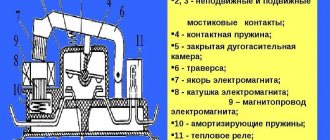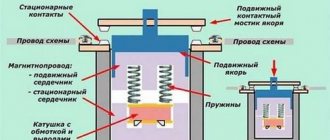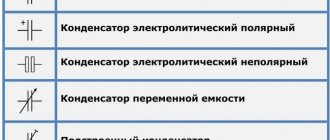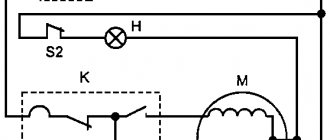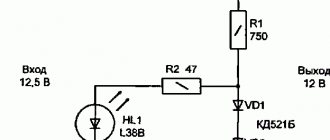In the dictionary Dictionary of foreign words
y, w.
1. A drawing showing the structure of something. or the relationship of parts of something. S. device. S. railway tracks. Circuit - related to the circuit, circuits.||Cf. GRAPH" title='GRAPHIC, GRAPH is, what is GRAPHIC, GRAPHIC interpretation'>GRAPH I, DIAGRAM" title='CHART, DIAGRAM is, what is DIAGRAM, DIAGRAM interpretation'>DIAGRAM, KROKI" title='CHART, KROKI is , what is KROKI, KROKI interpretation'>KROKI, PLAN" title='PLAN, PLAN is, what is PLAN, PLAN interpretation'>PLAN.
2. Presentation, description, depiction of something in its main features. General s. events.
3. An abstract and simplified image of something, a general ready-made formula. The play does not have characters, but patterns.
Share the meaning of the word:
Ponzi scheme: essence, features, practical examples
Author: Oleg Tkachenko Date: 03/15/2018
The Ponzi scheme appeared in the early 1920s, although it is impossible to be completely sure that such schemes did not exist before. It’s just that the scope of this pyramid turned out to be so huge that the scheme was able to go down in history and become a household name. It is noteworthy that about 100 years have passed since that time, and financial pyramids not only continue to exist, but also appear almost every year on an even greater scale. For example, the famous MMM pyramid, which is resurrected every year in a new guise. This suggests that there will always be people who want easy money, but the existence of such pyramids undermines the trust of real investors in new financial projects.
Read on to learn how to distinguish a financial pyramid from real investment projects and not lose your money.
The history of the Ponzi pyramid
It all started with a postal agreement that began to operate in 1906 between several dozen countries. Its essence boiled down to the introduction of uniform rules for postal exchange: unique postal coupons with the same value in each country were introduced into circulation. The coupon was included in the letter and the recipient, instead of spending money on postage stamps for a reply letter, received them in exchange for the coupon.
The scheme worked perfectly for almost 10 years until the economic condition of European countries sharply deteriorated. As a result of the First World War, a financial crisis broke out in Europe, which led to a sharp imbalance in the value of postal coupons between European countries and the United States. If in Europe one coupon could be exchanged for one stamp worth 1 cent, then in the USA the same coupon could be exchanged for 6 stamps. There's just one problem: what good are those postage stamps if they can't be exchanged for real money?
The problem was solved by Charles Ponzi, who in 1919 proposed making money on the exchange rate difference by issuing bills that would make a profit. We will not go into the economic essence of the scheme; the important thing is that Ponzi was able to convince potential investors (with the help of the media) that investments could bring 100% within 3 months. Later, in August 1920, a federal agency audit of the Ponzi company would reveal that investors' money was not invested in any coupons and that investors' profits were paid out of other investors' money.
It is logical that such a scam was obviously doomed to failure, since sooner or later the flow of new investors would not be enough to fulfill obligations to old investors. But Charles was not interested in this issue at that time, and the pyramid was liquidated before this moment came. The result is predictable: it was not possible to return most of the money to investors; the organizer himself received a prison sentence and a fine.
A Ponzi scheme is often called a pyramid scheme. This is partly true, but there are significant points that distinguish Ponzi from the classic pyramid:
- A Ponzi pyramid has an ideological central organizer who controls the entire system and receives most of the profits. In contrast, in a regular financial pyramid there is a group of investors, which, based on the principle of MLM networks, attracts new investors who would also contribute to the influx of new clients;
- The Ponzi scheme involves not only attracting new investors, but also retaining old ones, for whom all conditions are created so that they reinvest capital. Classic pyramid schemes rely on continuously attracting new investors until the flow dries up.
- The legend formed by the organizer of the Ponzi scheme is much more convincing in comparison with ordinary pyramids. The lifespan of ordinary pyramids is several times shorter than that of a Ponzi scheme.
Ponzi Followers
1. Bernard Madoff scam. The largest fraud in history, the exact damage of which could not be calculated. According to various estimates, Madoff was able to embezzle from 50 to 64.8 billion dollars. USA, thereby deceiving about 3 million people around the world.
The enterprising fraudster began his career in 1980, engaging in trading operations on the New York Stock Exchange. He was one of the first to use electronic technologies in trading, gradually increasing volumes. Over time, under his leadership, investment funds began to appear, working with completely different assets: shares, options, etc. By the mid-90s, Madoff's reputation was so impeccable that investors from all over the world flocked to his funds. One of them was one of the founders of the Access International Advisers corporation, the Frenchman Thierry de la Villeuchet, who helped attract hundreds of millions of dollars from investors from Europe to the Madoff funds. After uncovering the scam, he committed suicide.
The principle of the pyramid was classic: the Madoff corporation attracted money from investors of other investment funds, corporations, and investor pools, which it allegedly invested in stock trading. Among the clients you can find such names and companies as Steven Spielberg, Joseph Safra (owner of banks and real estate around the world). Investors were attracted by the guaranteed return of 10-12% and the almost complete absence of management fees. But in fact, the money was paid only at the expense of other investors.
Where auditors and regulators were looking is a rhetorical question, but the scheme was able to last until 2008. According to legend, Madoff was betrayed by his own sons, but it is not possible to verify the accuracy of the information. The pyramid managed to survive for so long because Bernard was not greedy, declaring a moderate return on investment. It is believed that he could have had patrons in power, but we are unlikely to ever know about this either. The pyramid no longer exists, and the organizer himself received 150 years in prison.
2. The scam of Sergei Mavrodi (MMM) . We are sure that everyone has heard about this pyramid. This largest pyramid in Russia was created in 1992 and left 10-15 million people deceived. But the point is not so much about her, but about the fact that Mavrodi did not stop there. Here are just a few reincarnations of this pyramid:
- Stock Generation is a virtual stock exchange considered the largest pyramid scheme in the history of the Internet;
- “MMM-2011: We can do a lot” and MMM-2012 are projects similar to MMM;
- Mavro is a cryptocurrency that appeared in 2021 (although in fact it is not one). At the end of 2021, the project was expecting a scam, followed by a restart;
- “MMM Financial Pyramid” is a 2021 project that the organizers call the Global Mutual Assistance Fund. According to legend, the project has existed since 2011, which is not entirely true.
It seems that the experience of the first MMM pyramid did not teach investors anything. It is difficult to say what motivates these people - passion or greed. But the fact remains that such pyramids will always have clients.
Other famous pyramids:
- Lou Perlman's diagram. Known in music circles (manager of Backstreet Boys and N'Sync), he is also known for building a pyramid that existed for almost 20 years. Investor losses amounted to more than $300 million. USA. Created in 1981, the pyramid of non-existent companies was so convincing that it was able to mislead even representatives of financial institutions.
- European Royal Club, which deceived German and Swiss investors for 2 years in 1992. The loss amounted to about $1 billion. USA.
- Wang Feng's ant farms. In 1999, a Chinese businessman opened an unusual company: he offered investors to buy ants for 90 days, care for them and return them at a higher price. The profitability was about 32% per annum, the turnover was about $2 billion. USA. After 14 months, the pyramid opened up.
Modern pyramid organizers have learned to perfectly disguise themselves as quite interesting investment projects. And therefore a few words are worth saying about how to recognize such schemes.
Signs of a potential financial pyramid:
- A legend that does not provide a clear understanding of how profits will be generated. Most of the simple Ponzi-type schemes are limited to general phrases that can only be convincing to those who do not have a deep understanding of the segment and financial service.
- Guaranteed return on investment. No investment fund can guarantee success. If the organizer provides such a guarantee, there is a clear sign of a pyramid scheme.
- Aggressive marketing campaign. The task of the organizer of the pyramid is to attract as many investors as possible, so the media, forums, social networks are used - any channels where investors are convinced of the profitability of the project, but do not focus on the idea itself. Having an affiliate program aimed at attracting as many clients as possible is another sign of a pyramid scheme;
- Investing without concluding any agreement.
- False licenses, lack of financial statements, statutory documents, lack of information about the founders.
No one is saying that you can’t make money by investing in pyramid schemes, but an investor must soberly assess their risks and understand the possible consequences. And in conclusion, we will answer the question of those who still doubt what Penenza is.
Why is Penenza about real investments and not about deception?
Penenza is a crowdlending platform that connects borrower and investor. This is a financial intermediary that earns a commission by quickly matching those who want to invest money with those who need that money. The operating principle of the platform is clear and transparent: targeted loans are issued to legal entities, and the details and documents of specific borrowers are visible in your personal account. The company's authorized capital is 1.5 million rubles, and registration documents can be found here. In this section you will also find a public offer and financial statements.
And a few more points that a potential investor needs to know:
- Penenza is a member of a working group at the Central Bank of the Russian Federation, which discusses the possibility and necessity of regulating the sphere of peer-to-peer lending.
- The platform has been in existence for 2 years. And during this period, auditors and regulatory authorities did not have any complaints about her work.
- Penenza does not guarantee profitability. The company only offers to earn about 20% per annum. This profit is the result of market analysis, which showed what conditions may be of interest to borrowers and investors with minimal risks. Having a unique scoring system, Penenza successfully competes with banks and microfinance organizations, reducing the likelihood of borrower default to a minimum;
- The investor receives all the information about the scoring results of a particular borrower. All borrowers are real companies, the existence of which can be checked in the registry, as well as their representatives can be contacted personally.
Penenza is interested in professional investors who want to grow their money wisely. If you have any questions, ask them to a platform representative in the chat on the main website. And good luck with your investing!
